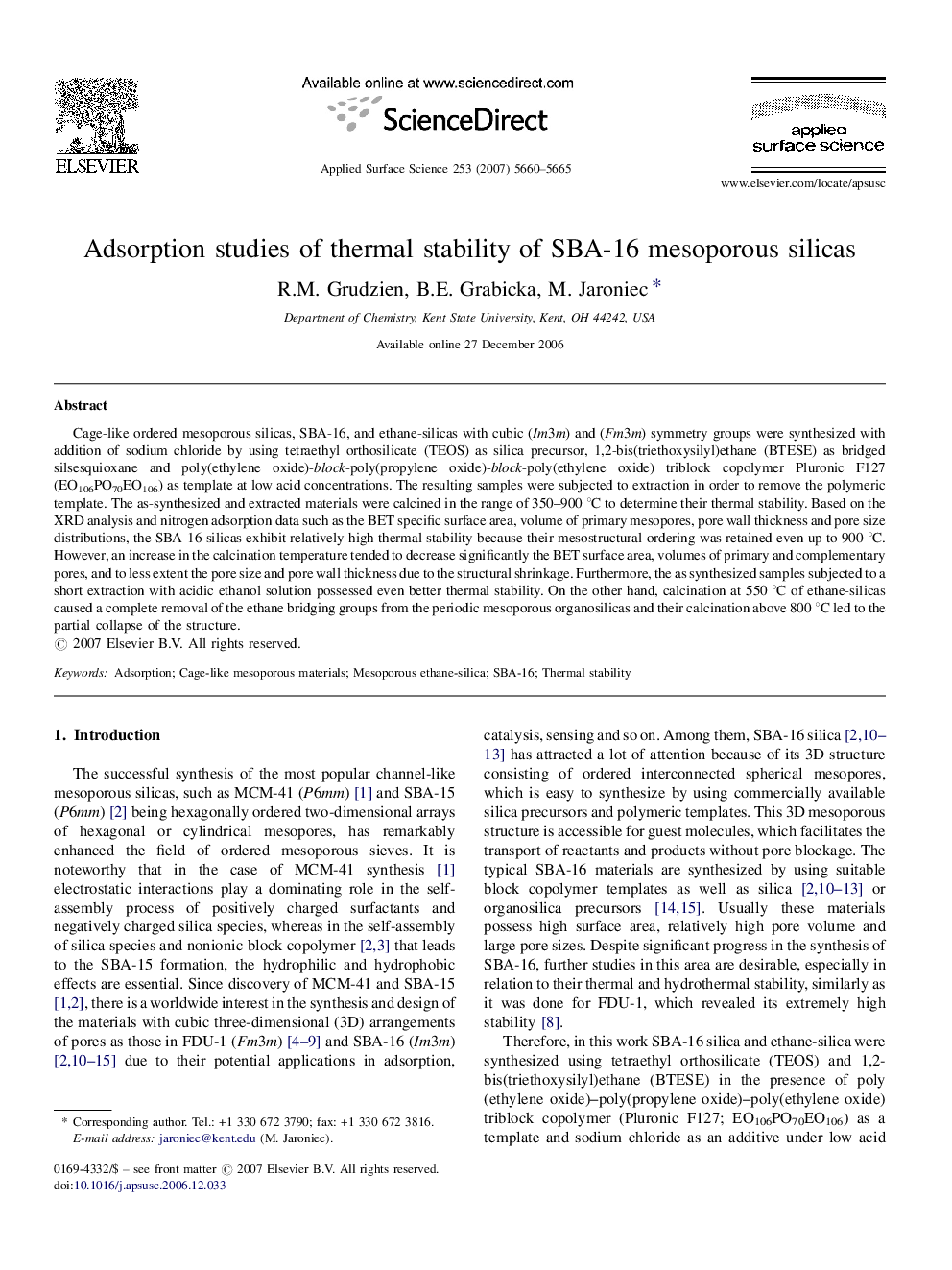| کد مقاله | کد نشریه | سال انتشار | مقاله انگلیسی | نسخه تمام متن |
|---|---|---|---|---|
| 5369720 | 1388451 | 2007 | 6 صفحه PDF | دانلود رایگان |

Cage-like ordered mesoporous silicas, SBA-16, and ethane-silicas with cubic (Im3m) and (Fm3m) symmetry groups were synthesized with addition of sodium chloride by using tetraethyl orthosilicate (TEOS) as silica precursor, 1,2-bis(triethoxysilyl)ethane (BTESE) as bridged silsesquioxane and poly(ethylene oxide)-block-poly(propylene oxide)-block-poly(ethylene oxide) triblock copolymer Pluronic F127 (EO106PO70EO106) as template at low acid concentrations. The resulting samples were subjected to extraction in order to remove the polymeric template. The as-synthesized and extracted materials were calcined in the range of 350-900 °C to determine their thermal stability. Based on the XRD analysis and nitrogen adsorption data such as the BET specific surface area, volume of primary mesopores, pore wall thickness and pore size distributions, the SBA-16 silicas exhibit relatively high thermal stability because their mesostructural ordering was retained even up to 900 °C. However, an increase in the calcination temperature tended to decrease significantly the BET surface area, volumes of primary and complementary pores, and to less extent the pore size and pore wall thickness due to the structural shrinkage. Furthermore, the as synthesized samples subjected to a short extraction with acidic ethanol solution possessed even better thermal stability. On the other hand, calcination at 550 °C of ethane-silicas caused a complete removal of the ethane bridging groups from the periodic mesoporous organosilicas and their calcination above 800 °C led to the partial collapse of the structure.
Journal: Applied Surface Science - Volume 253, Issue 13, 30 April 2007, Pages 5660-5665